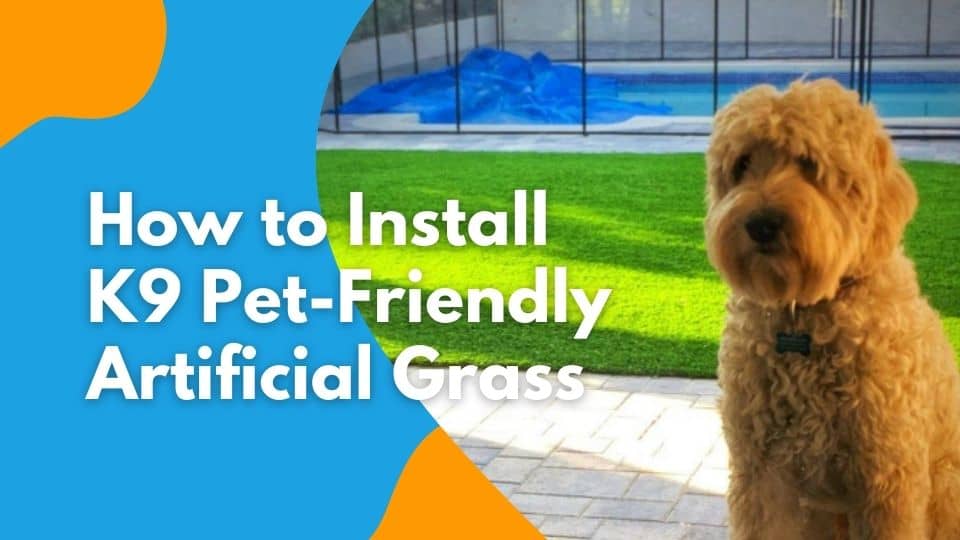
Learn how to install K9 pet turf artificial grass systems for dogs. Discover the best and most used approaches to proper pet turf drainage, and why it's so necessary....
Building a dog run and pairing it with pet-friendly fake grass can create the perfect space to offer your pup some fresh air and exercise without the need for constant supervision. Learn more about the benefits and maintenance needs of artificial turf dog runs below!
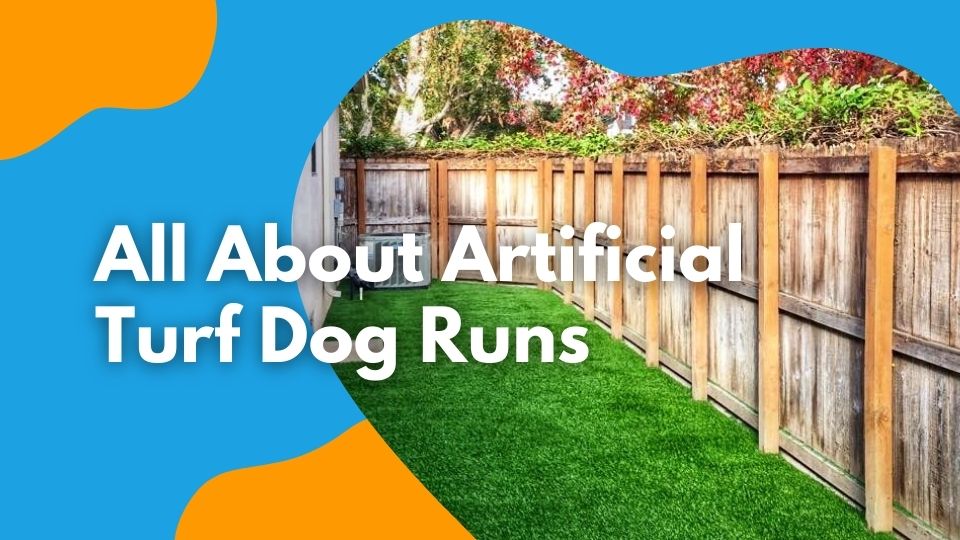
A dog run is either a private or public fenced-off area in which a dog can be kept confined and get exercise. A private dog run keeps them safe from potential hazards such as poisonous plants, chemicals, or traffic. They're also great because they contain your dog without the hassle of having to always be on the lookout for other people. A public dog run, on the other hand, is a social place for dogs usually located within city parks. These are especially ideal in California, where the typical dog owner doesn't have a large yard where their pup can get exercise. Basically its your very own dog park!
A private dog run is generally located at the back of a person's property, though it can be on one side too. In private settings, dog runs can be accompanied by a dog house and sleeping quarters for your pet if it's near a water source to provide ample water for your pooch. This area can be a small space or large, typically three to eight feet in width.
Some pet owners will even build small dog agility courts within their backyard dog run. While an artificial dog runs installation is typically enclosed by chain-link fencing, wood fencing can be used as well if your dog won't tear at it.
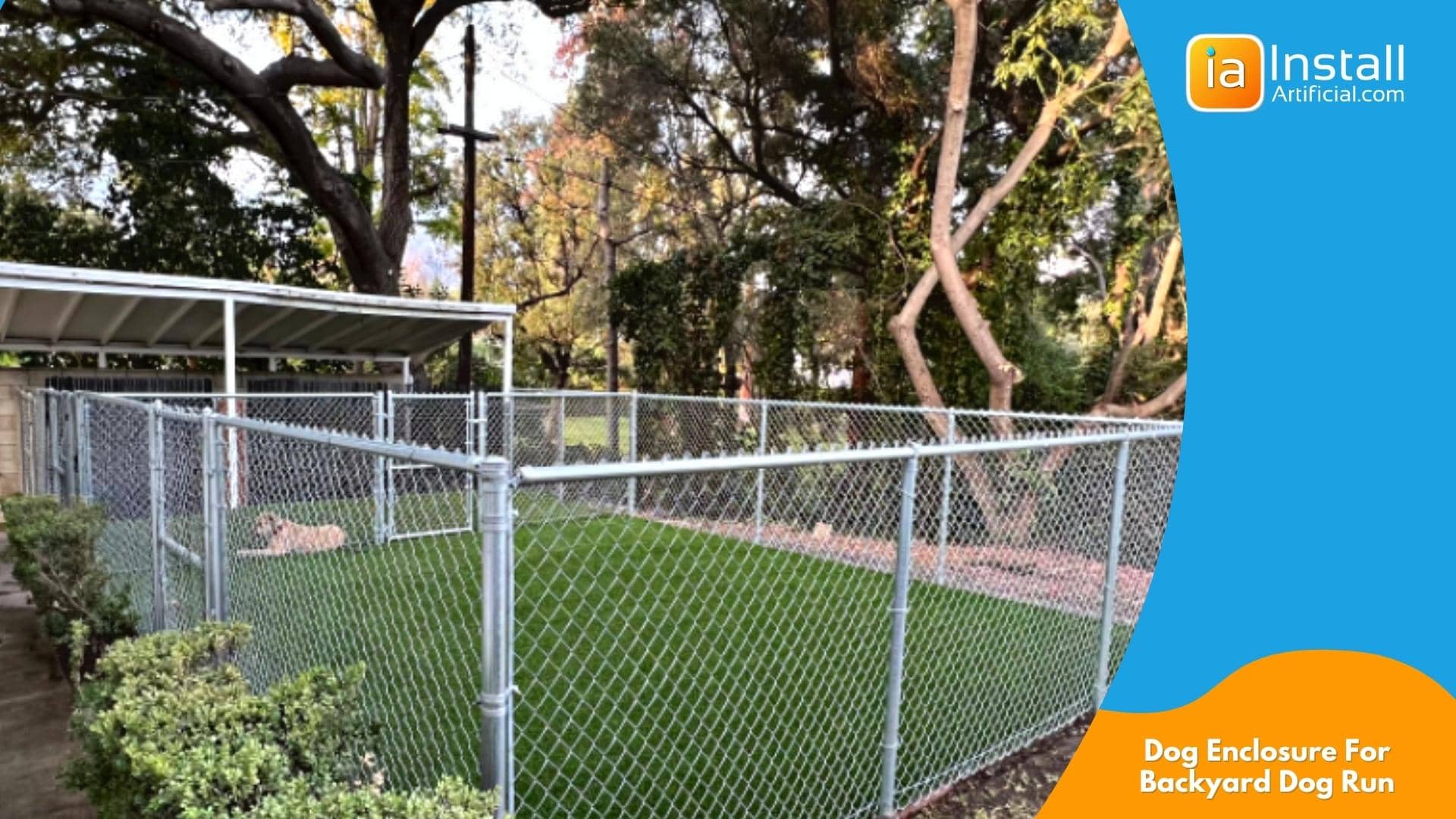
Enclosed dog runs can help with potty training and save your entire backyard from being your dog's toilet. This area can be a small space or large, depending on the size of your lawn and whether you have big dogs or small dogs. These enclosed kennels offer a safe play area with proper drainage to avoid odor from dog urine as your pup gets in their daily exercise and improves their physical health. The perfect backyard dog run will provide your furry friend with more space and can accommodate more than one dog, regardless of dog's size.
Don't settle for just a concrete pad as ground cover for your high-energy dogs. Instead, create an enclosed dog run that will provide them with a safe and stimulating outdoor space. This dedicated area can be customized with:
Both you and your furry friend will appreciate the benefits of this secure space!
Let's dive into the world of ground covers for dog runs! With 6 options to choose from, each with their own pros and cons, it's important to find the perfect fit for your furry friend.
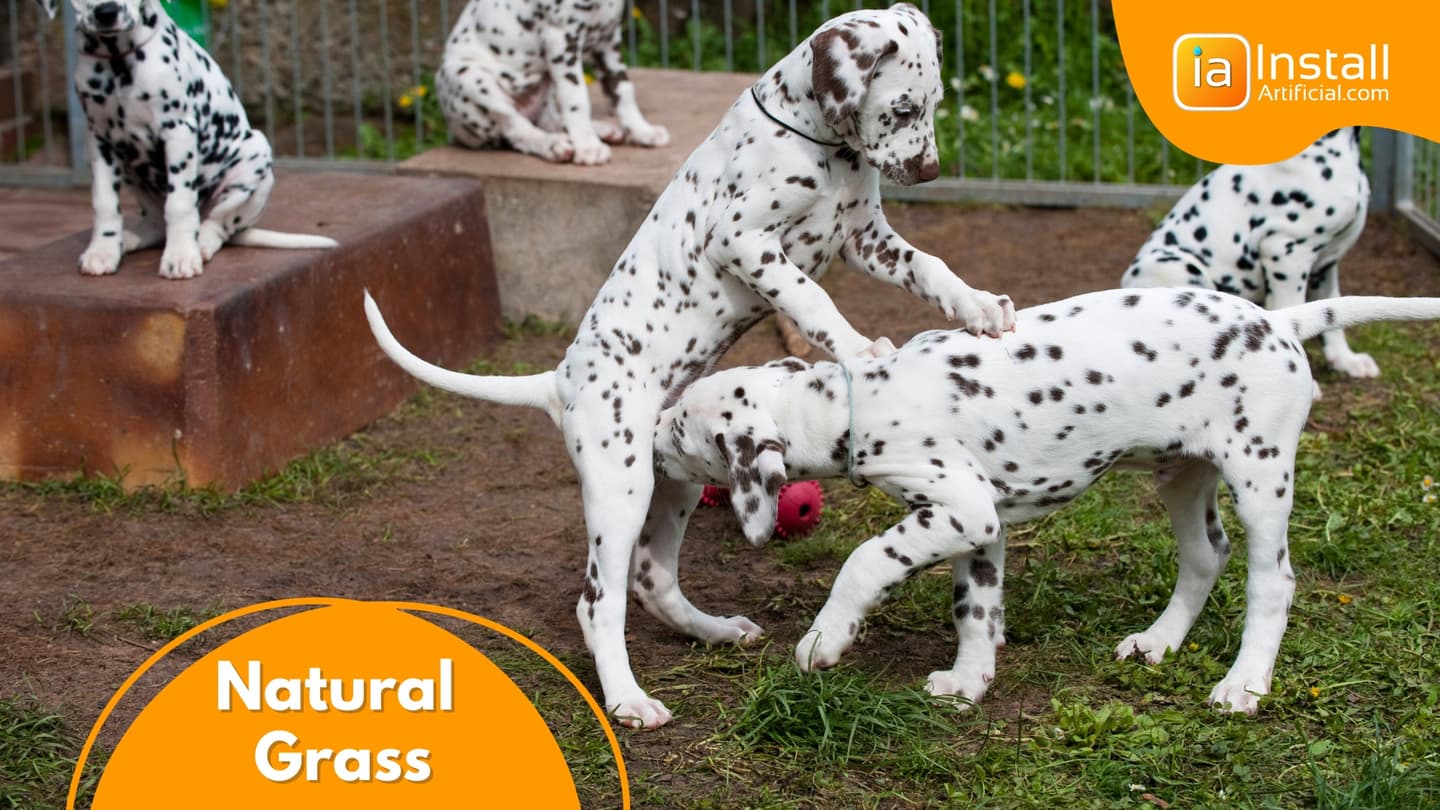
While grass is generally safe for dogs, maintaining a natural grass surface in a designated pet area can be incredibly challenging. The constant presence of dogs in the area will inevitably lead to ruts and brown spots that are nearly impossible to prevent. Furthermore, mowing the grass within the pet area becomes a difficult task. It becomes a dilemma, as there's no way to fertilize or treat the grass without putting your dog at risk or having to remove them from the area.
Conversely, waste clean-up is relatively simple when it comes to natural grass. With just a poop scoop and a garden hose, you can easily keep the grassy pet area clean with minimal effort.
While gravel may seem like a sturdy ground cover for a pet area, it can actually have some drawbacks. In the scorching summer heat, gravel can become uncomfortably hot for pets, especially if it's exposed to direct sunlight for extended periods of time. Additionally, the small pebbles can pose a risk to puppy paws, as they can easily get lodged between their delicate pads. Another issue with gravel is that it tends to spread and migrate to other areas of the yard, making it difficult to contain.
Concrete is a popular choice for ground cover in dog runs due to its durability and ease of cleaning. Simply rinsing it with a hose can remove any mess. However, it's important to be aware that concrete can become uncomfortably hot or even dangerous for your furry friend when exposed to the sun, similar to gravel.
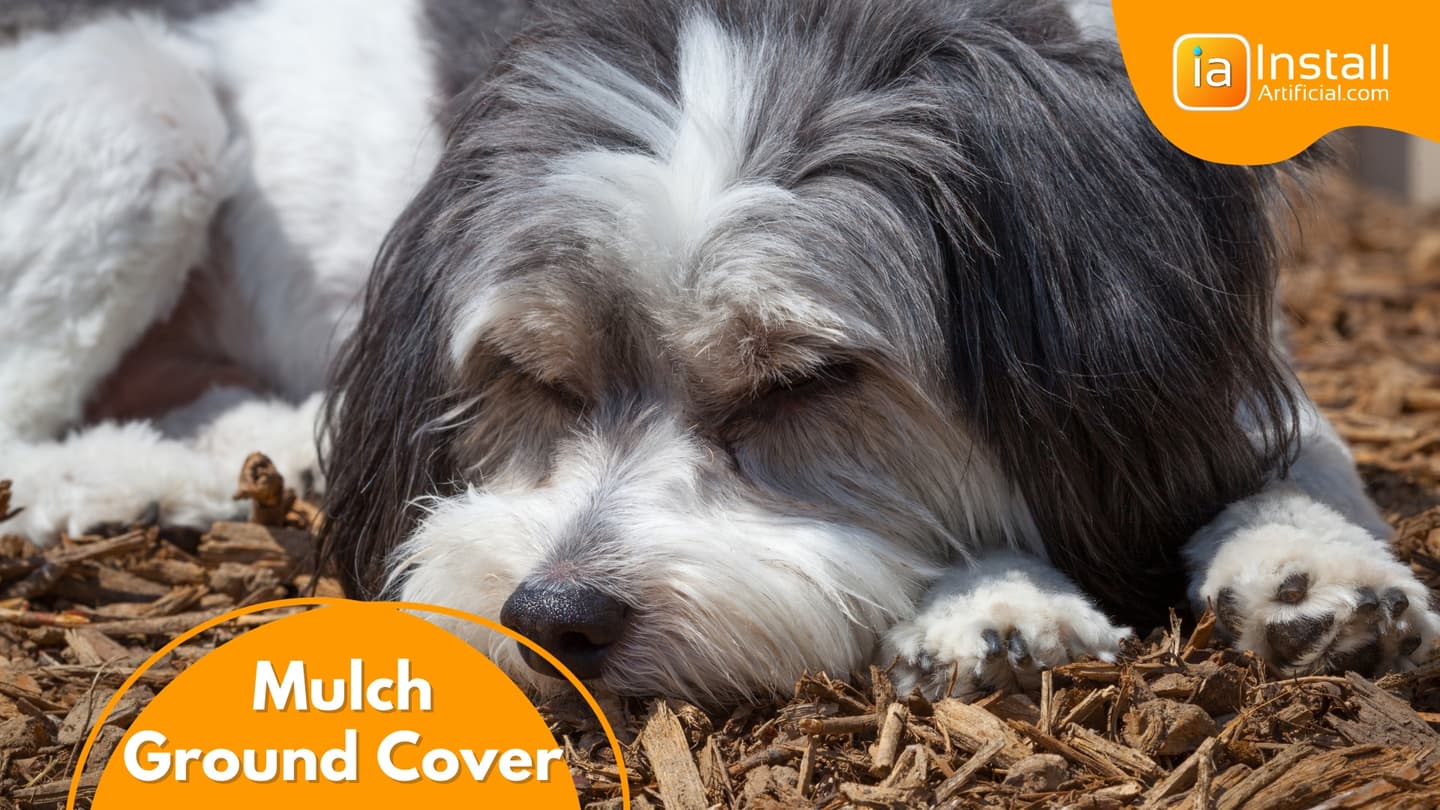
Wood chips and mulch are commonly chosen as ground cover options for dog runs due to their appealing appearance, affordability, and ease of spreading.
However, it is important to consider the drawbacks of using wood chips and mulch, such as the accumulation of bacteria and urine, which can be challenging to fully remove from the wood chips.
Paving stones offer the perfect balance between the durability of concrete/gravel and the natural beauty of grass. While they may be pricier than concrete, their aesthetic appeal makes them worth it. However, it's important to note that paving stones can still become hot in the sun.
A clever solution is to incorporate patches of grass in between the paving stones, creating a cool oasis for your furry friend to enjoy. Plus, keeping the paving stones clean is a breeze. On the flip side, maintaining the grass can be a bit challenging.
By combining the benefits of both materials, you can create a dog-friendly space that is not only visually appealing but also easy to maintain.
Artificial grass has become incredibly popular as a ground cover option for dog runs, both indoors and outdoors. It's no surprise, considering the numerous benefits it offers.
Unlike natural grass, fake grass for dogs maintains its pristine appearance without any ruts or unsightly brown patches. It has the same springy feel and natural look as real grass, but with added durability and low maintenance. Cleaning and maintaining artificial turf in dog runs is a breeze – simply spray it down and sanitize once a week and you're good to go.
The durability of artificial grass makes it ideal for withstanding the wear and tear caused by running and playing dogs. Just fluff it occasionally with a rake to prevent matting. And contrary to common misconceptions, artificial grass is completely safe for pets and kids.
So why not give your furry friend the best of both worlds? Opt for artificial grass in your dog run and enjoy the benefits of a beautiful and durable ground cover that requires minimal maintenance.
There are a few things you'll want to keep in mind when shopping for artificial grass for your furry friend. The best artificial grass materials for dog runs are typically shorter, less dense, and with durable blades. Artificial grasses with short blades make cleaning the surface much easier, while lower density allows for quicker drainage when flushing the surface with water.
Durability is very important in for dog owners and pet turf, so opting for synthetic grass that has structured blades is ideal for dog runs. Opting for pet-specific fake grass will be most ideal and cater to most dog breeds. While these materials may cost more, this will help reduce wear and tear over time as your pets use this artificial grass space to play and exercise.
After considering the overall design, it is crucial to prioritize the quality of your dog run's fencing material. Opt for a sturdy fence that can withstand your dog's natural tendencies to chew, paw, jump, and climb. For dogs that love to dig, ensure that the fence extends deep into the ground or has a concrete foundation to prevent any escape attempts.
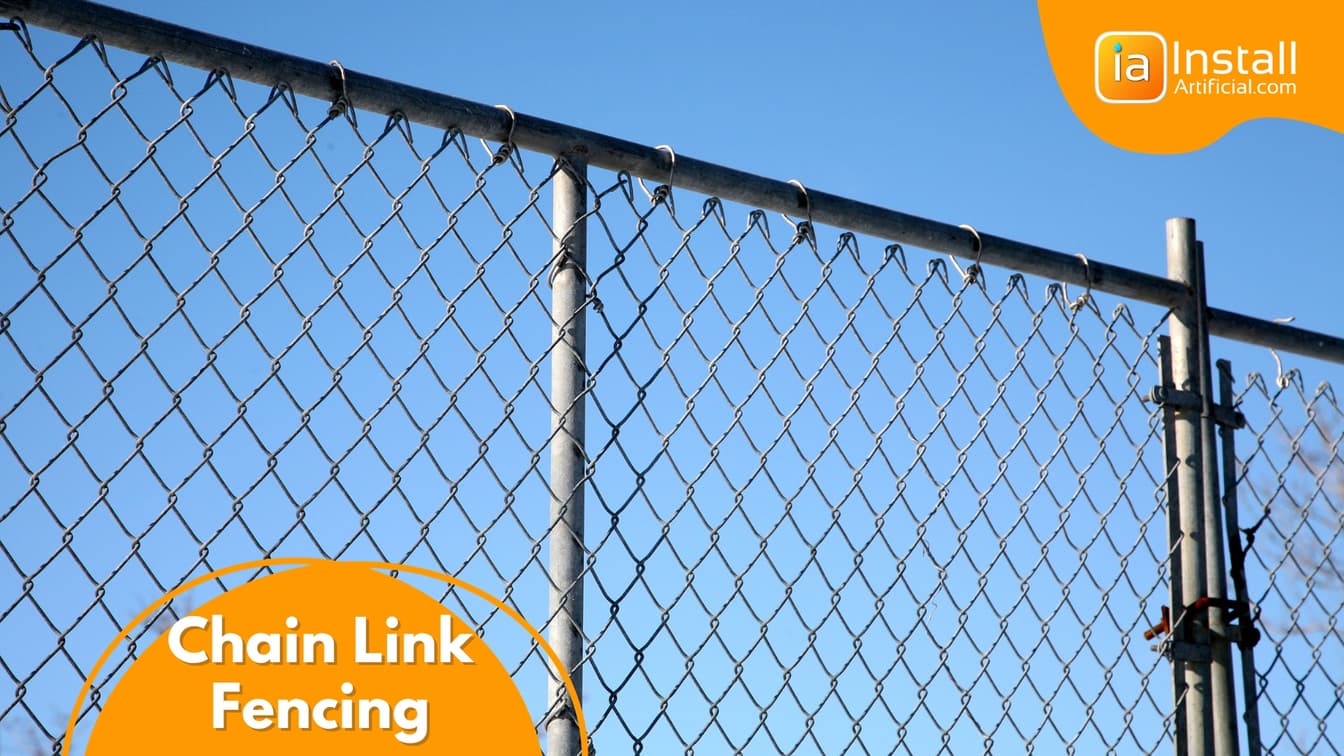
Chain link fencing is a popular choice for pet areas due to its affordable price and long-lasting durability. Not only does it provide a secure enclosure for your furry friend, but its see-through design allows you to keep an eye on them at all times. However, some people may not find the appearance of chain link fencing appealing. Luckily, there are solutions to enhance its look, such as painting the fence or adding plastic or bamboo privacy slats for a more aesthetically pleasing result.
Opting for high-quality metal fencing can give your dog run a touch of elegance. Choosing a wrought iron fence transforms the dog run into a beautiful addition to your backyard landscape. However, it's important to note that metal fences can be expensive and may corrode over time if not properly maintained. When selecting a metal option, make sure the fencing is free of gaps that are wide enough for your dog's head to fit through, and avoid fancy features like scrollwork that could accidentally harm your dog.
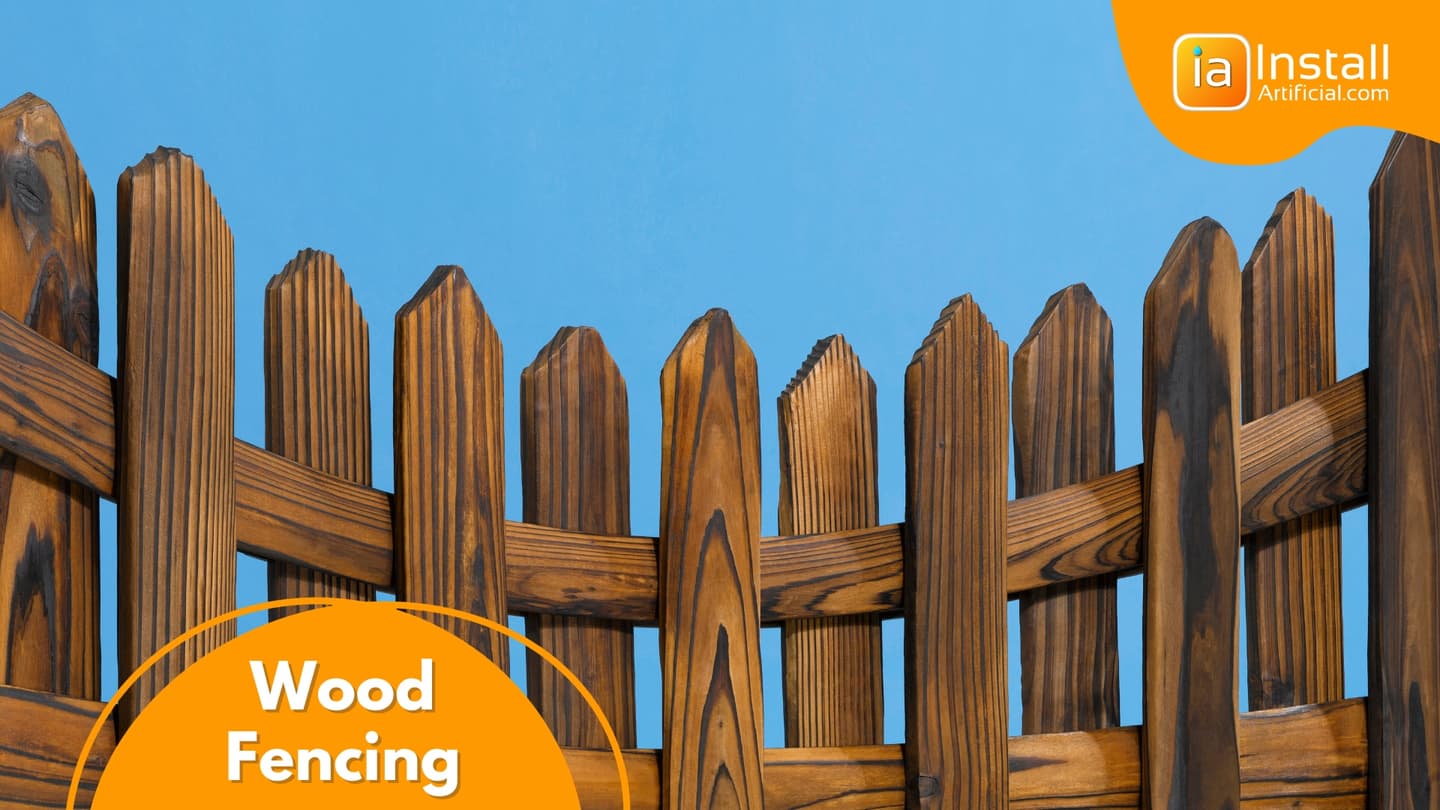
Wood fencing is a popular choice for its natural and beautiful appearance. It is readily available and easy to work with, making it a cost-effective option. However, it's important to keep in mind that wood is not as durable as some other materials. It can deteriorate quickly when exposed to rain and sunlight. Additionally, dogs may scratch or chew on the wood, and larger dogs that frequently jump on the fence can compromise its integrity over time. Despite these considerations, wood fencing can still be a great choice for certain situations.
When using wood fencing, it's essential to use a stain or paint that is non-toxic to dogs in case they accidentally ingest it. Furthermore, ensure that your wooden fence is sturdy enough to withstand the wear and tear caused by your furry friend. By taking these precautions, you can enjoy the natural beauty of wood fencing while ensuring its longevity.
This particular type of fencing offers the perfect middle ground, combining the advantages of the previously mentioned fences while minimizing their drawbacks. It not only provides the necessary durability for dogs but also adds an attractive aesthetic appeal that surpasses that of chain link fencing. Additionally, it comes at a more budget-friendly price compared to wooden fencing.
Manufacturers recommend installing a drainage layer beneath the artificial grass in pet turf dog runs to assist with air ventilation and water flow. This drainage layer in conjunction with consistent sanitizing will prevent odors and bacteria growth from occurring when you build a dog run. Keep reading to learn more about the components of a pet turf system for dog runs:
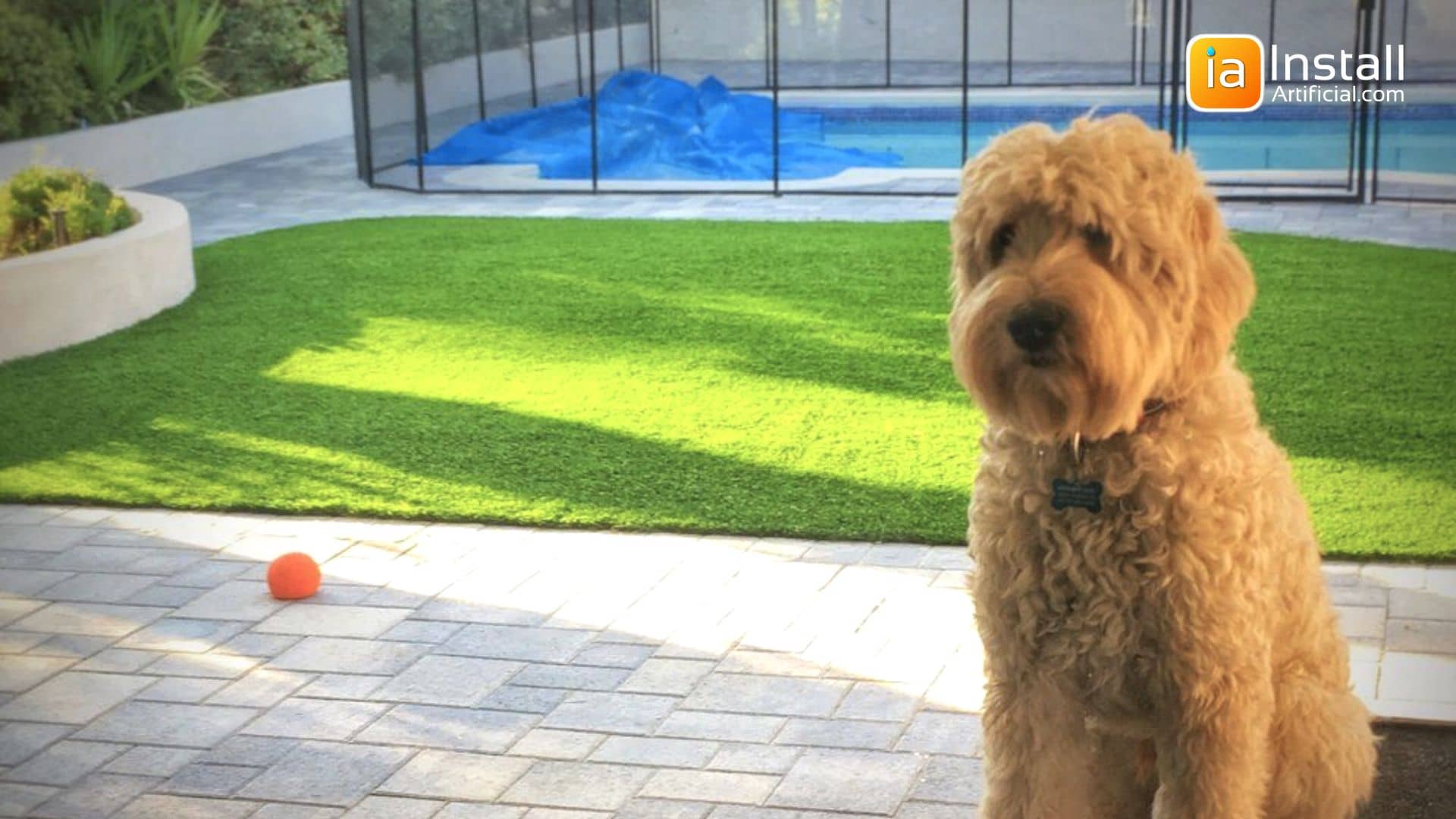
As mentioned above, short and durable grass with a low density is best for backyard dog runs. You'll want something that's easy to clean because pet turf will require consistent rinsing and sanitizing. Opting for plush and soft grass in dog runs is usually a mistake for pet owners. Dense and tall artificial grass is less wear and tear resistant, becomes hotter in the sunlight, drains slower, and takes longer to clean - not ideal for most dogs.
Artificial grass for for dog owners should feature a 5 mm drainage grid called Drain Core. This drainage layer goes between the base layer and the grass itself and elevates the surface to create an air void for circulation and accelerated drainage. This addition is vital in areas where pets are using the restroom consistently to help prevent urine from living beneath the surface and causing odor and bacteria growth in your dog run.
Another component of pet turf systems that helps reduce and prevent odor build-up is a turf deodorizer, also known as Zeolite. This fine substance is a natural odor eater that traps the ammonia from urine and locks in its odors until the area is flushed with water. When installing a dog run in backyards, we lay a layer of turf deodorizer beneath the surface because it can leave a chalky film on the grass if it's applied on top.
The best infill to use in areas that are pet specific is antibacterial sand infill. The granules of this infill have a plastic-like coating that helps to prevent bacteria, mold, and mildew growth. This is also the best infill for dog runs because the coating makes the infill smooth rather than abrasive like silica sand. Cooler surfaces and better drainage are also a few more of the benefits that antibacterial sand infill offers.
For dog runs, manufacturers recommend installing a frame around the perimeter and attaching pet-friendly turf to the frame with heavy-duty staples. This will remove the use of nails and be the best preventative measure against wear and tear and active diggers. Most homeowners opt out of this, however, this is highly recommended in public or commercial artificial dog runs.
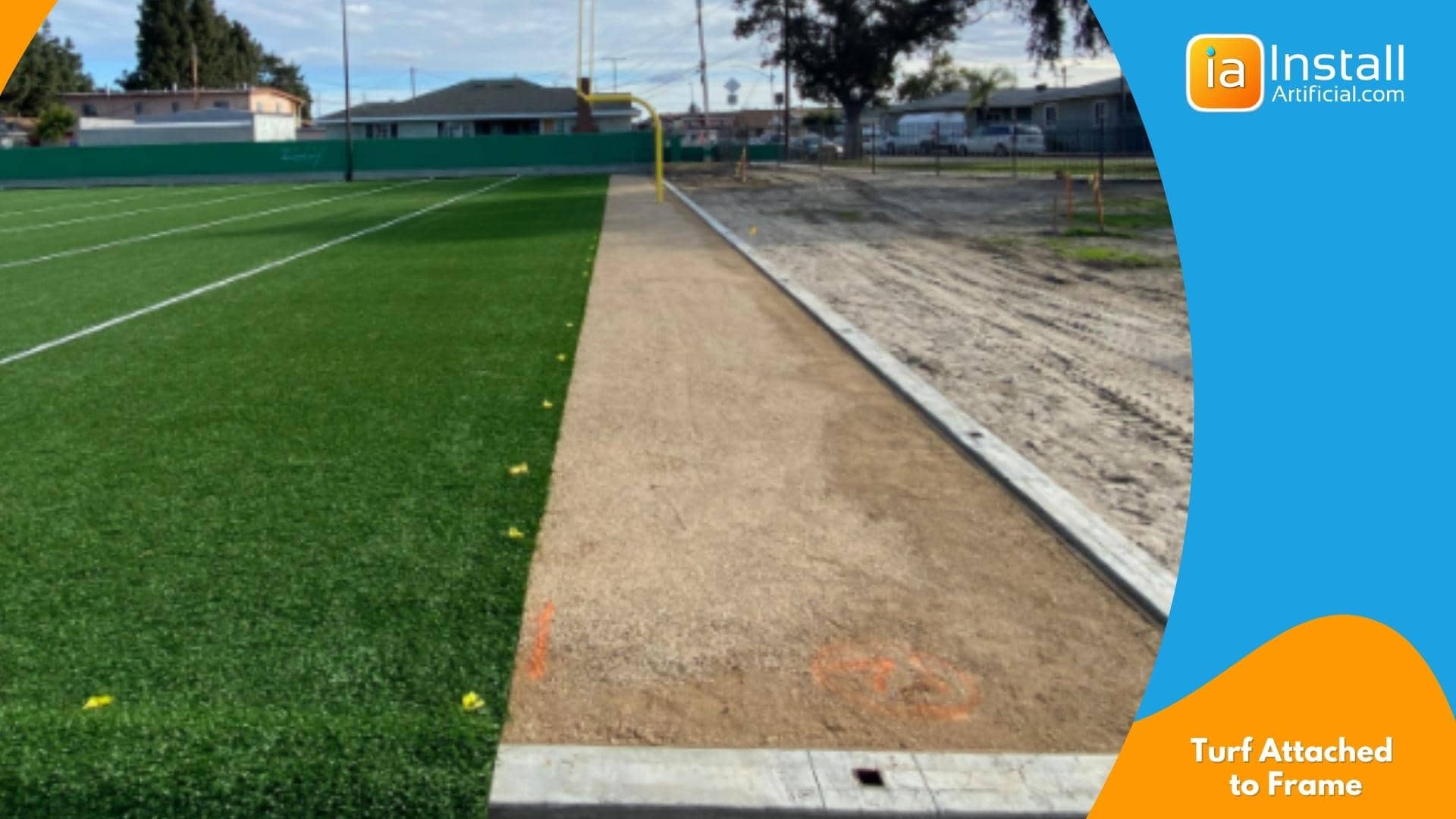
To keep your dog run with fake grass long-lasting and odor-free, we'd recommend creating a "relief area" to confine the area in which pets actually use the bathroom into a smaller space. This will help with cleaning and sanitizing, water conservation, and keeping the majority of your artificial dog run clean at all times.
This area is designed to be used for pet relief only, is usually up to 50 feet in size, and is completely washable. Cleaning a relief area can be fully automatic with a chlorine-enabled wash system, or rely on manual flushing and sanitizing. Relief objects, such as a fake fire hydrant or mailbox, will help lure your pup to this space to pee. This system is currently the most hygienic way to keep your artificial dog run clean, however, it requires some training to get your dog used to the relief area.
A Porch Potty is a small box typically set on a porch, patio, or balcony that is topped with artificial grass and acts as a litter box for dogs. This is typically used for smaller dogs and is purchased as a restroom alternative when a pet owner either doesn't have lawn space, or their lawn is not fit for pet use.
The nice thing about building an at-home dog run is that you can lay artificial pet turf on concrete and other hard surfaces. This allows you to create a green space for your pet to use the restroom even if you don't have a traditional lawn area. While the porch potty is a great temporary alternative to a natural lawn, this won't provide your dog with any play or exercise opportunities. Another obvious benefit to dog runs is the ability to allow your dog to run, play, and use the bathroom without being supervised because the area will be enclosed.
When designing and building a pet-friendly space and looking into backyard dog run ideas, it's important to plan ahead. Although it may not be hot and sunny during the installation, summer months bring high temps and this space can become uncomfortable for your pup if not properly shaded. Dogs are unable to express their discomforts, so it's important to build them a space that will keep them safe during play! Shading the artificial dog run will help keep the surface of your turf cool as well. There are multiple shading options for dog runs to reduce sun exposure:
If you're designing a dog run and building it yourself, let us support you! Reference this quick walkthrough to see what installing an artificial dog run entails, and check out our DIY pet-friendly turf installation article for more detailed step-by-step instructions.
Build any fencing prior to laying the pet turf to ensure there is no damage to the turf during other installs. Check out backyard dog run ideas online to understand exactly what you're looking to accomplish. Shop our Online Turf Store to find the best and coolest pet-friendly turf materials and have them shipped directly to you!
Remove any natural grass from the area along with approximately 2 in. of soil using a sod-cutting knife. We'd recommend letting the grass in this area die prior to removal because this will make removal easier and can save you some money on dumping costs. Lay a heavy layer of weed killer before moving on with base preparation
This is manufacturer recommended in pet turf installations. Not only is nail-free safer for dogs, but it helps prevent any uplift from avid diggers. Use 2x4 treated wood planks to build your frame around the perimeter.
If you opt out of the frame installation, you'll need to ensure there's proper edging to support the base.
Lay 1 in. of decomposed granite along the surface, using a push brush to distribute the DG evenly before using a heavy-duty roller to compact and smooth the surface. While manufacturers recommend the use of a class II road base, DG will produce the best results without the need for professional tools. Repeat this step 2-3 times.
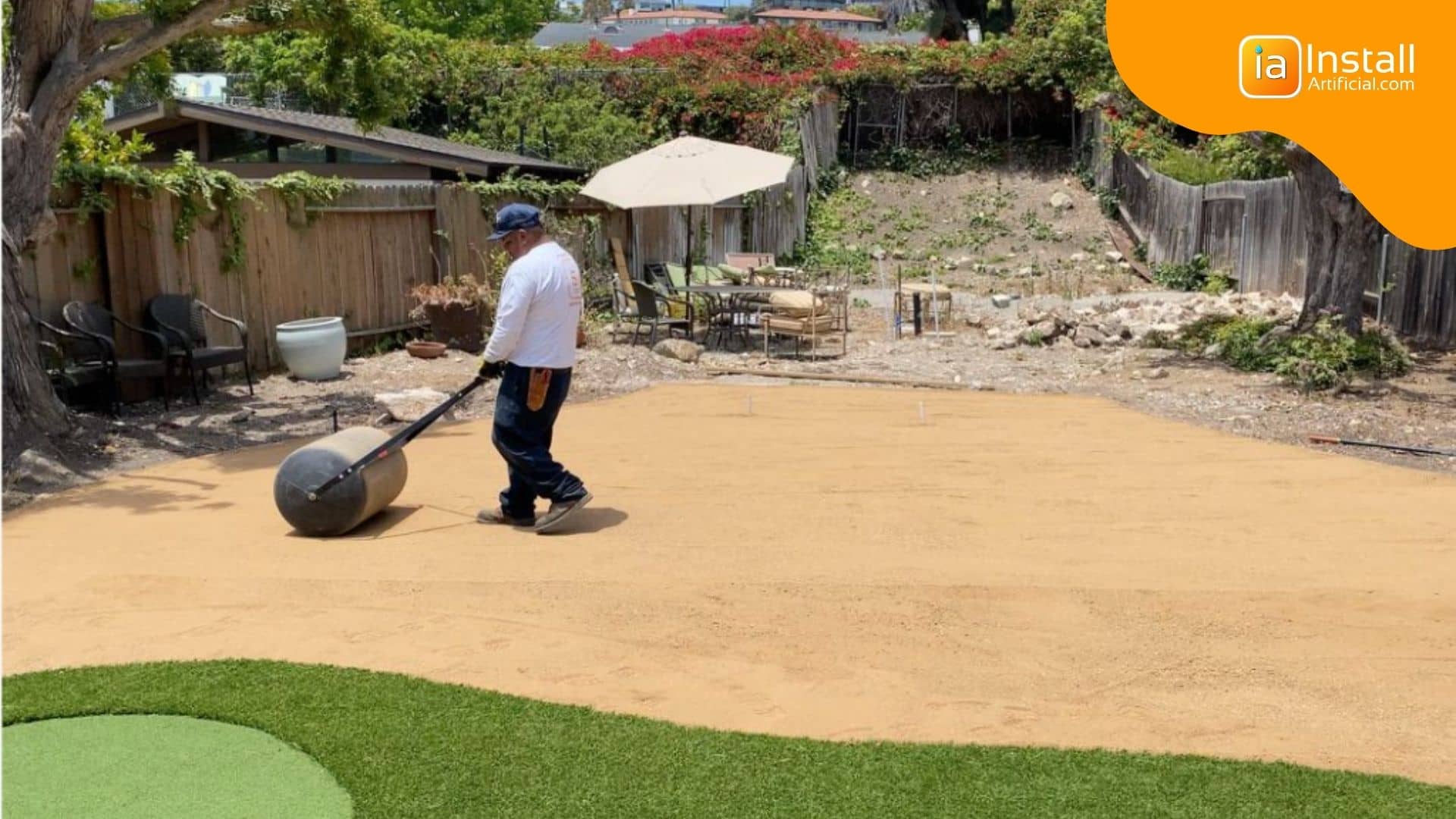
Applying a decomposed granite stabilizer to the DG will solidify the surface so it can hold the nails during the turf-laying process. This is an important step to take, as skipping it can cause turf to begin to raise on the edges over time and the nails will not be secure. One container of stabilizer covers approx. 50 sq. ft, so divide the square footage of your area by 50 to determine how many containers you'll need. Allow the area to fully dry before moving on to the next step.
Sprinkle your turf deodorizer along the surface of the base. This will trap and lock in the smell of ammonia and other odors between cleanings.
Fix the drain core or air drain to the surface with non-galvanized nails to keep it secure beneath the pet turf. You'll want to make sure this layer is secured, otherwise, there may be movement underneath the surface.
If you're working with multiple pieces of pet-friendly fake grass for a dog run, you'll need to cut the grass to size and seam your pieces together before you can begin securing the installation. We'd recommend seaming with the zipper or "s" effect to reduce visibility.
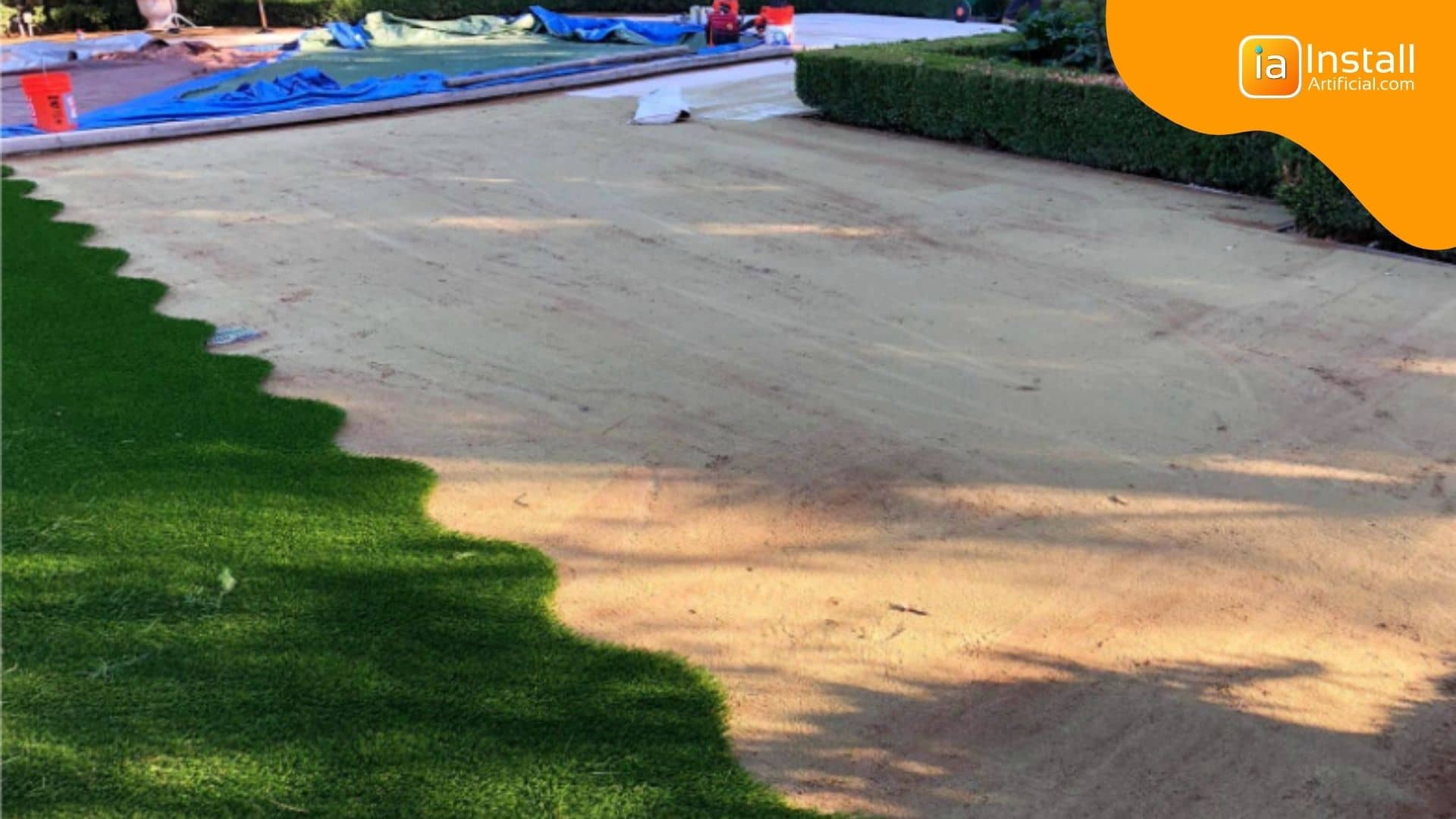
Stretch and nail down the turf along the perimeter. Stretching the turf is very important to prevent wrinkles and buckling as temperatures fluctuate. Let the turf sit in the sun prior to securing so that it's easier to stretch. If you're using nails, make sure they're hammered as deep into the surface as possible. For the best results, nail every 2 ft. throughout the surface as well.
Apply antibacterial sand infill onto the surface. Use a push brush to distribute approximately 1 lb. per sq. ft. Brushing the surface after applying infill is important to push the infill down near the backing of the turf and fluff the blades upright.
To learn how to build an artificial dog run on concrete, check out our article on how to DIY turf installation on hard surfaces!
It's very important to flush out artificial pet turf in dog runs with water and a sanitizing agent to prevent odor build-up. While the added drainage layer accelerates drainage and offers more ventilation, the longevity of your artificial dog run really depends on how you keep it clean. For this reason, a pet relief area will substantially reduce water use because you won't need to flush out the entire area as often as you'll need to clean the relief area.

We'd also recommend brushing through the turf with a stiff-bristled broom occasionally to break up the sand infill and redistribute it across the surface evenly, this will help keep drainage accelerated.
We're here to support you with your artificial dog run project. At InstallArtificial, we sell high-quality turf materials for DIY turf installation AND we install turf ourselves. Whether you're looking online for dog run ideas to install it yourself, or you want us to handle the entire process, contact us today by requesting an estimate below to get started!
Building a dog run in your backyard not only provides a secure and comfortable space for your furry friend to enjoy outdoor playtime but also gives you the peace of mind that your lawn, flowers, and guests are safe from any destructive behavior.
Whether you opt for a simple weekend project or go all out with an extravagant puppy palace, it's important to choose the right features and materials that cater to your dog's needs. Make sure the fencing is sturdy enough to withstand digging, chewing, and jumping, while the ground cover should be easy to clean, pet-friendly, and low maintenance.
If you're considering installing pet-friendly artificial grass in your dog run, take the time to explore our website and learn about the various features and options available. Educating yourself is the first step towards creating a maintenance-free outdoor space for your pup.
Learn about:
We offer a wide range of artificial turf products to suit any situation, and our team is ready to provide you with free quotes and exceptional customer support. Let our experts guide you in creating the perfect installation plan for your needs.
With our top-notch artificial grass installers, you can trust that you're working with the best in the industry.
At InstallArtificial, we firmly believe that investing in artificial grass is a decision well worth making, and we're here to assist you every step of the way. If you have any questions or concerns before purchasing turf, our knowledgeable team is here to provide you with the answers you need.
Take advantage of our offer for a free design and installation estimate. We're eager to help you transform your outdoor space with our high-quality artificial grass.
Yes, artificial turf is an excellent choice for a dog run due to its numerous benefits. Not only is it durable and easy to clean, but it also eliminates the problem of mud or mess that natural grass can create. Additionally, artificial grass is safe and non-toxic, making it a pet-friendly option. One of the added advantages is that most dogs are unable to dig through artificial grass, providing an extra layer of security for your furry friends. Say goodbye to pests, allergens, and the hassle of maintaining a traditional lawn, and embrace the convenience and practicality of artificial turf in your dog run.
In addition to a sturdy and well-compacted foundation, it is essential for pet turf dog runs to incorporate a drainage layer that creates an air void to effectively flush away urine and bacteria during cleaning. Also, the inclusion of odor neutralizing infills is important in maintaining a clean and fresh-smelling space.
All synthetic grass products from trusted suppliers will be lead free and non-toxic. Pretty much any artificial grass option can be pet friendly with the right infills and adequate drainage. However, pet turf areas require consistent cleaning to avoid odor and bacteria. Because of this, pet owners will find it more ideal to opt for shorter artificial grass that has a lower density and durable blades.
Pet-specific turf differs from regular artificial turf used in landscaping in a few ways. Pet turf is designed to be shorter, stiffer, and more durable, prioritizing resilience and resistance against wear and tear. While landscape turf aims to replicate the appearance and texture of natural lawns, pet turf sacrifices the natural look in favor of longevity and durability.
To receive a free installation estimate for artificial grass, you can easily request your complimentary estimate by visiting our website, where you'll find a convenient form to fill out. We invite you to reach out to us with any queries or concerns you may have. We are here to help and guide you through the process of transforming your outdoor space with artificial grass.
The best ground cover for a dog park is artificial turf. Dirt, wood chips, and other ground covers don't provide a clean and safe surface the way artificial pet turf does. Artificial grass for dog parks is much more resistant to wear and tear over time and is dig-proof allowing the space to remain in high quality for years with a few simple maintenance practices.
If you have enough space and suitable weather conditions, adding a backyard dog run can be a fantastic idea. Dog runs provide ample opportunities for exercise and mental stimulation, keeping your furry friends happy and healthy. Additionally, if your dog has any behavioral issues or social anxieties, a dog run can provide a safe and secure space for them to feel comfortable and relaxed.
It's important, however, to ensure that you don't leave your dogs unattended for extended periods of time. A dog run should not substitute for regular interaction and quality time with your dog. Dogs are social animals and need human companionship and attention.
Artificial grass for dogs can be a DIY project to save on costs. Keep in mind, however, that because durability and safety is top of mind in these areas and you may want to enlist the help of professionals. To learn more about the installation steps and DIY how to, check out our articles below!
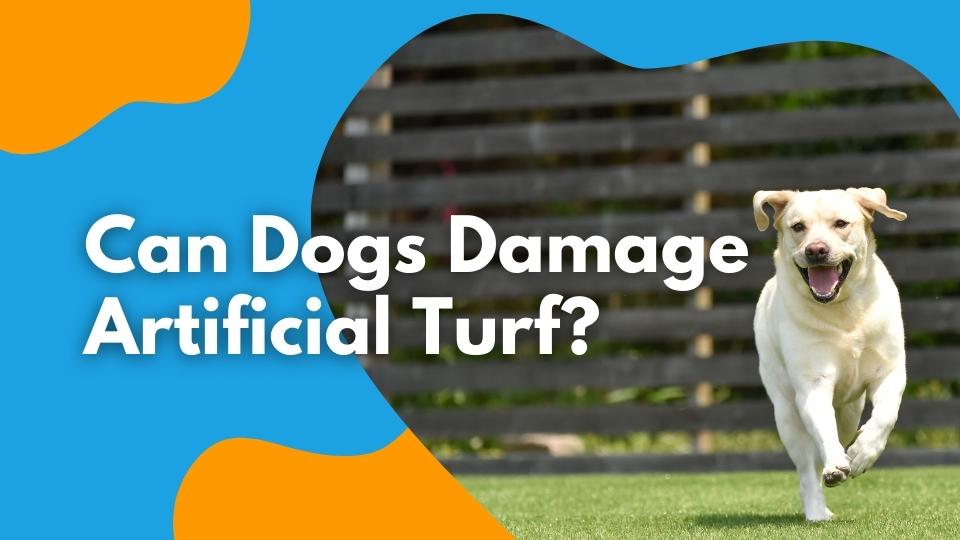
Artificial grass is known for providing a durable and long-lasting alternative to natural grass, but can it hold up to the terror of your furry friend? Understand how...